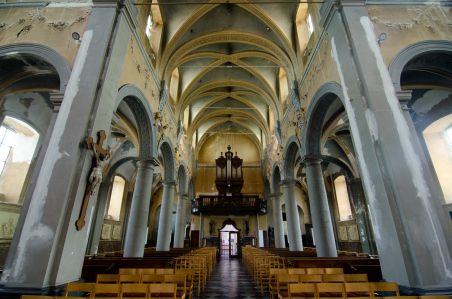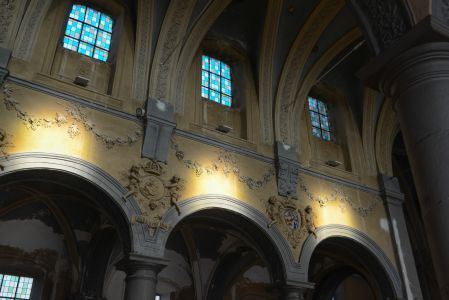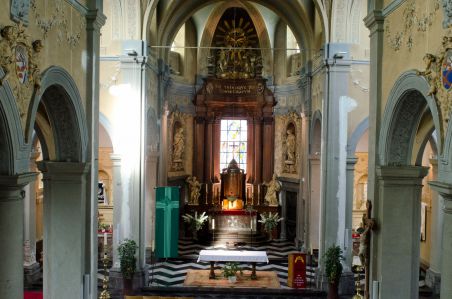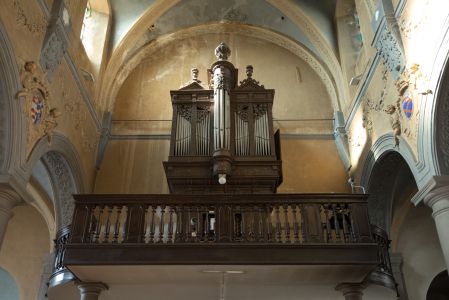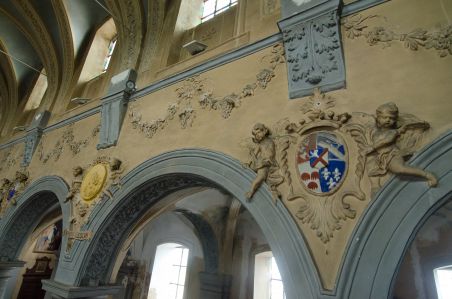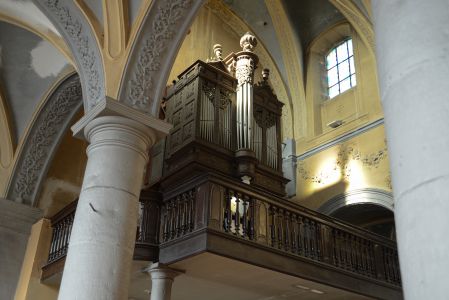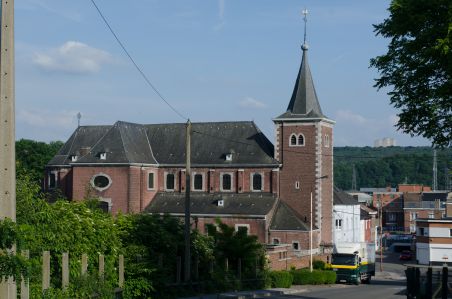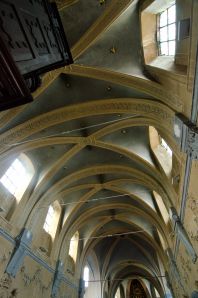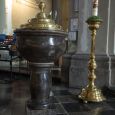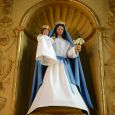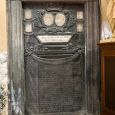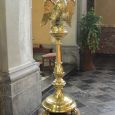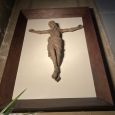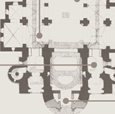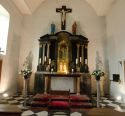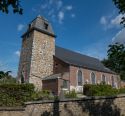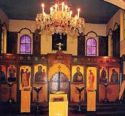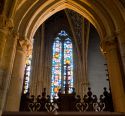Church | 1717 | | Catholic Church



Map
Opening hours
01 April - 31 October
Mon 9.00 - 18.00
Tue 9.00 - 18.00
Wed 9.00 - 18.00
Thu 9.00 - 18.00
Fri 9.00 - 18.00
Sat 9.00 - 18.00
Sun 9.00 - 18.00
01 November - 31 March
Mon 9.00 - 16.00
Tue 9.00 - 16.00
Wed 9.00 - 16.00
Thu 9.00 - 16.00
Fri 9.00 - 16.00
Sat 9.00 - 16.00
Sun 9.00 - 16.00
Religious offices
Description
The main body of the building (1717) in brick and stone comprises three naves behind a square tower (1830). On the outside to the right of the entrance is a beautiful wooden Calvary.
Inside the central nave, vaulted over Romanesque arcades, leads to the choir with a floor in black and white marble. The wooden high altar in Louis XIII style is surmounted by a richly adorned tabernacle. The large wooden statues (18th century) are from the school of the well known sculptor from Liege, Jean Del Cour, and represent Saint Mathias, patron of the parish, Saint Hubert and Mary and Joseph.
The side chapel on the left is dedicated to Mary. High above the entrance is a magnificent organ case dating from 1598 and one of the oldest in the province of Liege.
KIKIRPA : Photo-library online
Photos
Remarkable elements
Baroque organ
Above the rood screen at the entrance door stands an organ case dating from the end of the 16th century (1598). It is one of the oldest in the Province of Liège. But it has actually been in the church since 1810, just after the French Revolution. At that time, the State appropriated church property and sold it on. This organ may have come from the Val-Saint-Lambert abbey, which disappeared in 1796.
Baptismal font and Paschal candle
The baptismal font is made of polished stone and topped with a brass cover. Elegant in its simplicity, its base bears the date it was placed in the church: 1830. It was moved to bring it closer to the Paschal candle, because traditionally, the baptised person receives a small candle, lit on the large Paschal candle, which is renewed every Easter night and evokes the risen Christ.
Virgin and child
While the chapel on the right is dedicated to Saint Joseph, the one on the left is dedicated to Mary. An 18th-century wooden statue depicts her as the Madonna carrying her infant Jesus. She is dressed in a richly decorated gown and wears a crown, as does the infant Jesus.
Commemorative plaques
The commemorative plaques are placed on either side of the high altar and set into the wall of the apse. They are made of black marble and bear witness to two key moments in the construction of the church. The one on the left commemorates the memory of two benevolent spouses. The plaque on the right recalls the extension work carried out on the church at the beginning of the 20th century, financed in large part by Madame Delaveux.
Lectern
The lectern is the piece of furniture on which the missal, the liturgical book for the celebration of the Eucharist, is placed. Made in a workshop in Liège, it bears the date of manufacture: "anno Domini 1926". It features a bulbous column and an eagle with two wings spread, carrying the book. It symbolises the Holy Spirit, the one who will bring the Good News.
Christ on the cross
Oak sculpture (polychrome lost) from the 2nd half of the 13th century. Formerly attached to the outside wall of a neighbouring house, this Christ on the Cross was installed on the gable of the church in memory of a mission preached in August 1837 by Redemptorist Fathers from Liège, and then under a canopy to the right of the tower when the town planning was changed in 1956.
The fragility of the work, which was restored in 2018-2020, prevented it from being reinstalled under the awning.
The Christ illustrates with restraint and sobriety the Mosaic interpretation of the Christus dolorosus, which can be seen in several generations of Christs.


